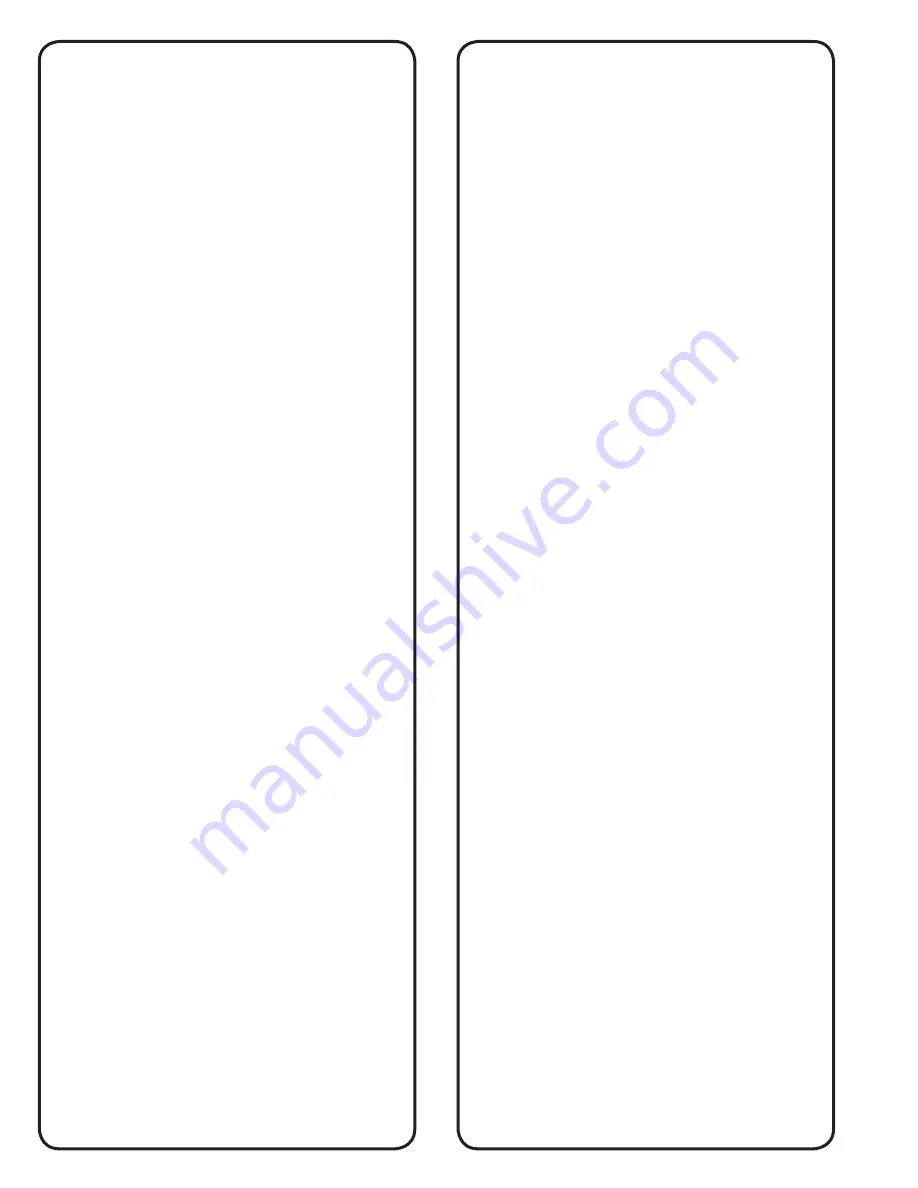
30119-02 Rev. 2.6/07-09
4
(10) inches upstream from the center of the cutout
opening. The vanes must be parallel to the center line
of the pipe and should be equally spaced radially 120
degrees apart.
b.) MARK
the pipe around the straightening
vane bolts and burn or drill holes in the pipe where
marked.
c.) INSERT
the vanes into the pipe through the
saddle cutout opening with the bolts protruding
through the holes. Place seal (stainless steel with
rubber) washers over each bolt, directly against the
pipe. Brass washer should be placed between the
washer and the nut. Secure nuts to hold vanes to
the pipe. Nuts, bolts and washers not supplied. The
vanes can be welded to the pipe if desired. NOTE:
Meter head assembly (#13) should be removed before
welding. (See step IV.)
E.
WELDING SADDLE
should be centered over the cutout
section of the pipe. Make certain that no part of the pipe
protrudes past the inside edge of the welding saddle. Tack
weld the saddle to the pipe prior to welding a continuous
bead around the saddle. NOTE: Meter head assembly (#13)
should be removed before welding. (See step IV.)
F.
METER ASSEMBLY
should be placed in the line with the
propeller nose facing the upstream flow in the pipe. Use
care when installing the meter not to damage the propeller
as it passes through the saddle opening. The meter head
gasket should be inspected for any sign of damage and
replaced if necessary before installing the meter. Tighten
the meter head bolts securely.
MAIN LINE METER
OPERATION AND MAINTENANCE MANUAL
III. MCCROMETER
products have been carefully designed to
be as maintenance free as possible. Periodic preventive
maintenance, however, is highly recommended and should
be practiced according to schedule to assure continuous
accuracy and trouble-free performance of your propeller
meters. The maintenance and inspection procedure can also
be used as a guide to locating a problem in the unit that
may be the cause of abnormal meter operation.
Routine preventative maintenance should be performed on all
meters, which includes cleaning and an inspection of the
propeller and its bearing. The intervals between inspections
depend on the water quality and the usage of the meter.
The initial inspection should be performed after one to two
years of service, to determine the period between future
inspections. After five to ten years, the complete meter
should be inspected to insure years of dependable service.
IV. METER HEAD ASSEMBLY (#13)
should be removed from
the service line by removing the meter head bolts (#53) and
lifting up the rear (downstream) portion of the meter head
(#13), carefully pulling the assembly back (downstream) and
up at the same time to allow the propeller (#40) to clear
the inside of the meter saddle and be lifted free. Inspect
the meter head gasket (#52) for any sign of damage and
replace if necessary. Replace the meter head assembly
(#13) with a dummy cover plate if the service line is to
remain in operation.
V. WORKING AREA
chosen for disassembly and reassembly of
the internal meter components should be clean to reduce
the chance of dust or dirt particles being introduced into
the meter mechanism.
VI. TOTALIZER ASSEMBLY (#4)
service procedure should
include cleaning and inspection of the unit noting any exces-
sive wear on the change gear (#7 & #8) that may lead to
operational problems in the unit.
1. BONNET MOUNTING SCREWS (#3)
should be removed
and the entire bonnet (#1) lifted off of the meter.
2. TOTALIZER (#4)
is contained within the totalizer bonnet
(#1) and held in place by a base cup (#5). It should not
be necessary to remove the totalizer (#4) during inspection;
however, removal of the base cup (#5) is necessary for
inspection of the totalizer change gears (#7 & #8). Removal
of the base cup (#5) can be accomplished by inserting a
small screwdriver into the two cutouts and prying upward
under the edge.
3. TOTALIZER CHANGE GEARS (#7 & #8)
should be in-
spected for any sign of wear. Both the A-(drive) gear and
B-(driven) gear are attached to the lower portion of the
totalizer assembly (#4). Spin the floating totalizer driven
magnet in the center of the totalizer bottom (#4) to make
certain it spins freely without bind or drag. The bottom of
the totalizer has the letter “A” molded next to the A-drive
gear shaft, and the letter “B” next to the B-driven gear
shaft.
4. TOTALIZER DRIVE MAGNET ASSEMBLY (#12)
located
in the meter head (#13) at the top of the vertical shaft
assembly (#14) should be checked and adjusted if neces-
sary to position it 1/16 inch below the top surface of the
meter head (#13). Adjustments can be made by loosening
the socket head set screw in the side of the totalizer drive
magnet assembly (#12), and sliding it up or down the verti-
cal shaft (#14) as desired. Always be sure the set screw
is tightened into the flat on the vertical shaft (#14).
VII. GEARBOX (#17)
on McCrometer meters is sealed and filled
with gearbox oil to assure the long life and proper operation
of the parts contained in the miter gear frame assembly
(#21). Before disassembling the lower meter assembly,
the oil must be emptied out of the gearbox (#17). Vertical
shaft assembly (#14) must be removed before the gearbox
oil can be drained.
VIII. VERTICAL SHAFT ASSEMBLY (#14)
is pulled directly out
the top of the meter after removing two screws (#16) inside
the meter head (#13). Spin the upper bearing assembly
(#15) gently, checking for any sign of wear. Inspect the
vertical shaft assembly (#14) to be sure it is not bent or
damaged. To drain gearbox oil, turn meter over onto the
meter head (#13) and drain oil into a container.






























